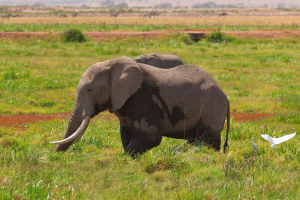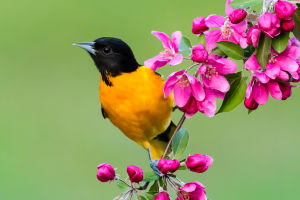The black swan is a striking bird whose unique black feathers and graceful posture make it a star in the natural world.
This article will reveal the black swan's living habits, habitat, and the color change process from juvenile to adult.
1. Basic Characteristics
Adult black swans have entirely black feathers except for the wing tips and flight feathers, which are white. This color contrast makes them particularly eye-catching on the water. Their beaks are red with a unique white stripe, creating a striking visual effect within the population.
2. Habitat
Black swans are widely distributed across the Australian continent, especially in lakes, marshes, and wetland areas.
In these habitats, black swans primarily feed on aquatic plants, herbaceous plants, and some small aquatic animals. They build nests in these environments, usually situated in vegetation near the water’s edge, to protect their eggs and young from predators.
3. Breeding Process
The breeding season for black swans typically occurs in the autumn and winter.
Adult black swans establish nests in relatively quiet and safe locations and perform complex courtship displays, including head bobbing, body shaking, and calling. The female black swan will lay 4 to 6 eggs in the nest, which are pale gray or greenish.
4. Juvenile Color Change
Interestingly, black swan chicks are not born black. Their feathers are initially white, similar to many other swan chicks. Newly hatched black swan chicks are covered in soft white down, which helps them stay warm in the nest and, to some extent, evade predators.
Over time, the feathers of black swan chicks gradually change from white to black. This process is not immediate but occurs in several stages. The chicks' feathers transition from white to gray and then to black. This change typically takes several months, until they reach full maturity.
5. Reasons for Color Change
The change in feather color of black swans is determined by genetic factors. The color change in swan feathers is a result of evolutionary adaptation to the environment.
During the juvenile stage, the white feathers provide camouflage, making it easier for the chicks to avoid predators. As the black swan grows, its feathers change to black, which not only enhances its visual deterrent but also signifies maturity in its natural habitat.
6. Role in the Ecosystem
As part of the wetland ecosystem, black swans play an important role in their habitat. They influence other organisms through the food chain and contribute to vegetation management.
Black swans' foraging behavior helps control the growth of aquatic plants, thereby maintaining ecological balance. Additionally, their droppings are an important component of nutrient cycling in wetland ecosystems, providing rich nutrients to water bodies.
Conclusion
The black swan, as a unique and beautiful bird, exhibits a fascinating phenomenon in the change from white to black feathers during its juvenile phase. This process not only serves as an interesting biological occurrence but also reveals many remarkable adaptation mechanisms in nature.
Understanding these changes and the living habits of black swans can help us better appreciate this species and provide a scientific basis for its conservation. Through this introduction, we hope to raise more awareness about the black swan and its habitat and encourage efforts to protect this beautiful natural treasure.


